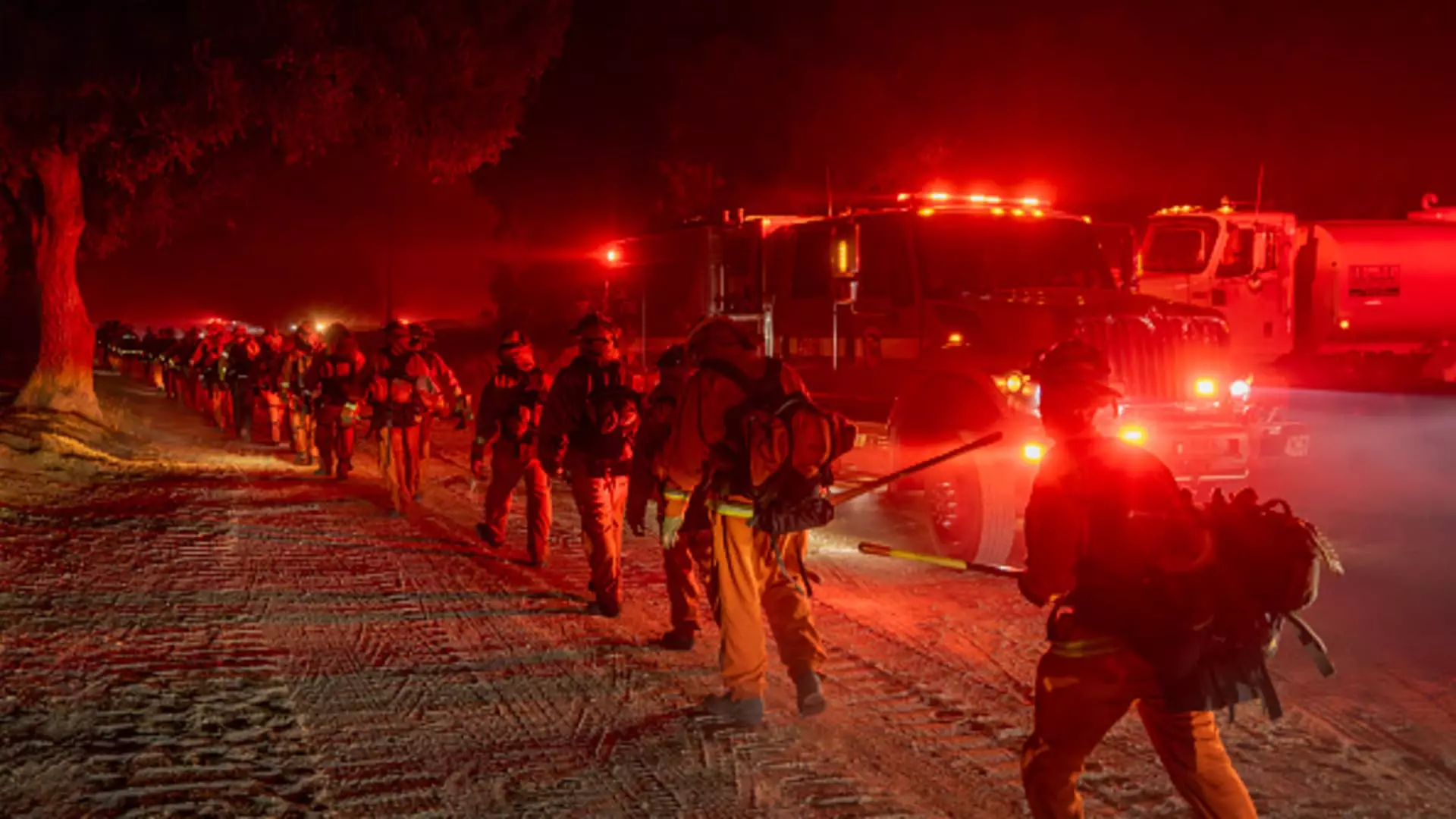The southern region of California is grappling with devastating wildfires that continue to pose severe risks to communities, ecosystems, and firefighting resources. Recently, on Wednesday, a brisk brush fire known as the Hughes Fire ignited approximately north of Los Angeles. This blaze rapidly escalated, consuming thousands of acres due to the fierce Santa Ana winds sweeping through the region. By Thursday evening, the California Department of Forestry and Fire Protection (Cal Fire) reported that the fire was roughly 36% contained, having ravaged over 10,000 acres of land.
Firefighters faced a critical situation immediately after the fire’s inception, as mandatory evacuation orders impacted upwards of 31,000 residents. Although these orders were lifted by Thursday afternoon, around 54,900 individuals remained under evacuation warnings, essentially on standby for possible displacement. The quick-response measures highlight the ongoing uncertainties associated with wildfire management in this volatile region.
Brent Pascua, a battalion chief with Cal Fire, emphasized that this incident exemplified the characteristics of a swift-moving fire accelerated by adverse weather conditions. The region was experiencing heightened fire risks due to dry vegetation and critically low humidity, which provided ample fuel for the flames. Experts assert that such conditions are increasingly common due to climate change, which has made the occurrence of severe wildfires more likely.
Interestingly, the Hughes Fire unfolded a mere two weeks after the catastrophic Palisades and Eaton fires resulted in the tragic loss of life and severe property damage. The juxtaposition of these events underscores the urgency of implementing more robust firefighting strategies and community preparedness programs, particularly given the compounding effects of climate change on fire intensity and frequency.
The immediate response to the Hughes Fire involved extensive evacuations and community alert systems. The Los Angeles County Sheriff’s Department mobilized to issue evacuation orders at a rapid pace, reflecting the dire need for preparedness in the event of such emergencies. As evacuation warnings lingered, residents were urged to be vigilant and ready for further action, displaying a community consciousness that emphasizes collective safety in times of crisis.
This fire is different from others in its intensity and spread. While a relatively smaller fire in Sepulveda Pass also started on the same day, its impact was fortunately contained at approximately 40 acres. Owing to improved firefighting strategies, this incident showcased an effective response by Cal Fire and local teams, maintaining a 60% containment status by Thursday.
The widespread fires engulfing Los Angeles cannot be viewed in isolation. They necessitate a broader understanding of climate dynamics and their interplay with fire behavior. Experts have pointed towards a troubling trend associated with climate change, which exacerbates the conditions suitable for wildfires. The recent Palisades and Eaton fires have been labeled among the worst in Los Angeles history, destroying thousands of structures and demonstrating the catastrophic potential of these events.
The disheartening statistics surrounding the destruction of communities such as Altadena highlight the urgency of addressing this issue. The Eaton Fire, for instance, has laid waste to over 14,000 acres and leveled more than 9,400 buildings, while the Palisades Fire has similarly caused widespread destruction, further emphasizing the need for a more strategic approach to firefighting and preventive measures.
As Southern California continues to navigate the challenges posed by wildfires, there is a pressing need for a holistic response that incorporates climate science, community preparedness, and advanced firefighting strategies. The escalation of incidents like the Hughes Fire calls for a significant investment in resources, technology, and education to equip communities and first responders alike. Ultimately, collaboration between various agencies, communities, and scientific experts is paramount to mitigate the devastating impacts of wildfires and safeguard the lives and properties of thousands in the region.

